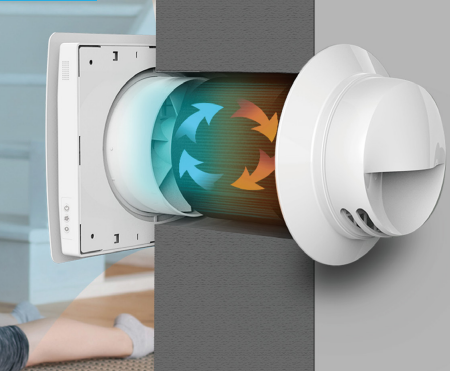Exploring HRV: A Complete Overview
Wiki Article
Discovering the Perks of Heat Recovery Ventilation for Energy Effectiveness in Residences
Heat Recovery Ventilation (HRV) systems offer house owners a useful approach to enhancing power performance. By reclaiming warmth from outward bound air, these systems can considerably minimize heating & cooling expenses. In addition, they supply a steady supply of fresh air, enhancing indoor air quality and comfort levels. As house owners take into consideration lasting options, recognizing the subtleties of HRV systems ends up being progressively crucial. What factors should one evaluate before making such a financial investment?Recognizing Heat Recovery Ventilation Systems

How HRV Boosts Indoor Air High Quality

Power Cost Savings: The Monetary Advantages of HRV
Making best use of power efficiency, heat recovery ventilation (HRV) systems offer significant economic advantages for house owners. By recuperating and recycling warmth from exhaust air, HRVs markedly minimize cooling and heating costs. This technology can lead to power cost savings of approximately 30%, depending upon climate and usage patterns. Property owners frequently observe lowered utility costs shortly after installment, making HRVs a financially smart financial investment with time. Additionally, lots of regions supply motivations or rebates for energy-efficient upgrades, even more boosting the monetary allure. As energy costs remain to rise, the cost-effectiveness of HRVs ends up being significantly clear. On the whole, the incorporation of HRV systems not only advertises power efficiency yet also adds to long-lasting economic cost savings for households.The Ecological Influence of Heat Recovery Ventilation
A considerable environmental benefit of heat recovery ventilation (HRV) systems exists in their ability to lower total energy intake. By redeeming warm from exhaust air and transferring it to inbound fresh air, HRV systems reduce the demand for energy-intensive heating and cooling down approaches. This reduction in power need adds to lower greenhouse gas discharges, as less nonrenewable fuel source is required to preserve comfy interior temperatures. Furthermore, HRV systems enhance interior air quality by successfully exchanging stale air with fresh exterior air, decreasing dependence on mechanical cooling systems that can hurt the setting. Generally, the application of HRV systems sustains sustainable living methods and lines up with international initiatives to combat environment modification by advertising energy performance in residential settings.
Selecting the Right HRV System for Your Home
Just how can property owners ensure they pick the appropriate heat recovery ventilation (HRV) system for their needs? They should evaluate their home's dimension and layout, as these aspects influence air flow requirements. Next, reviewing the system's efficiency scores is vital, as higher ratings show much better performance and energy savings. Home owners need to likewise take into consideration installment and maintenance prices, comparing different brand names and models for worth. In addition, it's vital to evaluate sound levels, as some systems operate even more silently than others. Consulting with heating and cooling experts can supply customized referrals based on details home problems. Ultimately, analyzing customer evaluations and warranties can help in making an educated decision, making certain that the picked HRV system effectively improves interior air quality and energy performance.Frequently Asked Questions

Just how Often Should I Tidy or Keep My HRV System?
The frequency of cleansing or maintaining a heat healing air flow (HRV) system usually depends on usage and environmental factors. Normally, it is recommended to perform upkeep every 6 months to assure peak efficiency and air quality.
Can HRV Solutions Aid Lower Moisture Levels Indoors?
HRV systems can effectively decrease indoor moisture degrees by exchanging stagnant, moist air with fresh, drier air from outdoors. HRV Heat Recovery Ventilation. This process aids preserve a well balanced interior environment, boosting comfort and protecting against moisture-related issues
What Is the Life-span of a Common HRV System?
The life-span of a regular heat recovery ventilation (HRV) system varies, typically lasting between 10 to 15 years. Routine maintenance can extend its performance and functional life, making sure peak efficiency throughout its usage period.Exist Any Type Of Noise Interest In HRV Solutions?
Noise worry about HRV systems can develop, especially from follower operation. Nonetheless, lots of modern-day units are designed to decrease sound degrees, ensuring they operate silently while preserving efficiency, which attends to possible disturbances in living settings.Can I Set Up an HRV System Myself, or Do I Need an Expert?
The specific contemplated whether to set up the heat recovery ventilation (HRV) system directly or work with a specialist. Normally, while DIY setup is feasible, experience guarantees proper HRV Heat Recovery Ventilation functionality and compliance with regional building regulations, improving system effectiveness.Report this wiki page